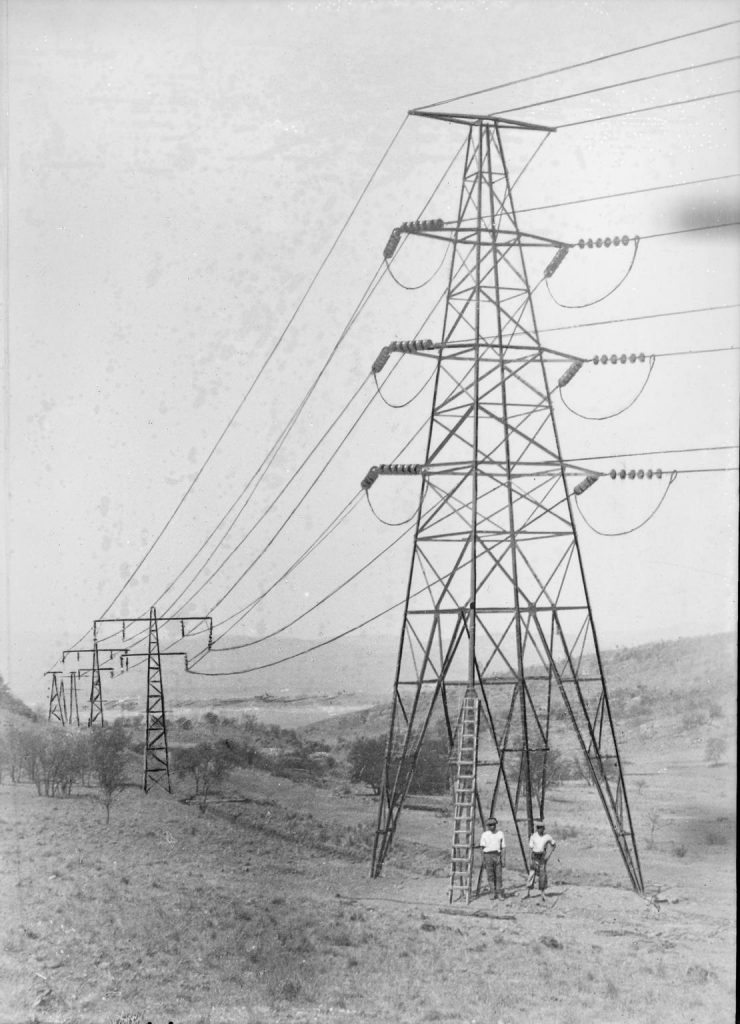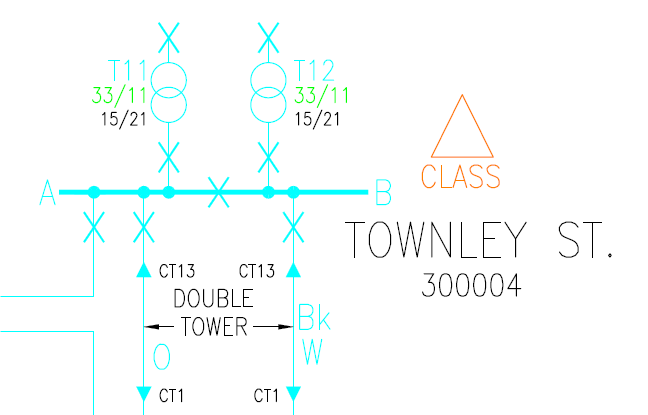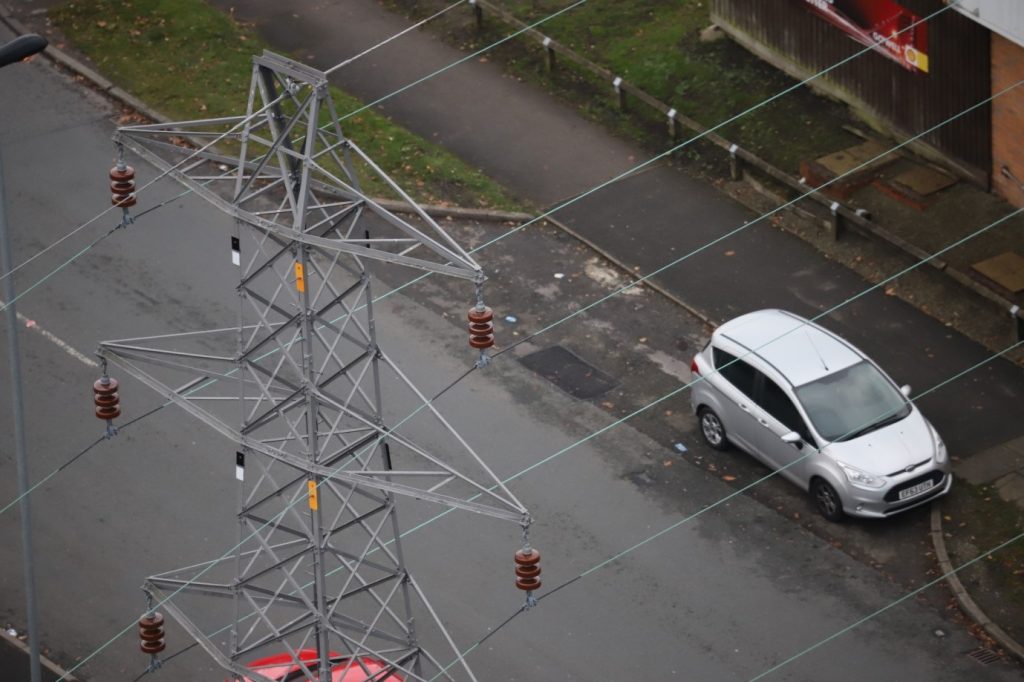Please note: Electricity: The spark of life ended in April 2019. To find out what exhibitions and activities are open today, visit our What’s On section.
I’m an asset data manager for Electricity North West, and I’ve worked closely with the Science and Industry Museum and with artists Tekja on the Electricity: the spark of life exhibit.
When we found out that the museum was hosting an electricity exhibit, we knew we needed to be involved. We operate the electricity network in the North West—the clue’s in our name, really.
We operate almost 13,000 km of overhead lines, and 45,000 km of underground cables from Macclesfield to Carlisle. And we monitor electricity usage across the region so we know where investment is needed to keep people’s lives running.
We invest almost half a million pounds in the North West every single week.
Now, if you really want to be in the know, there are a few of things you should understand about some of our terminology and how we work.

Science Museum Group © The Board of Trustees of the Science Museum
Firstly, our underground network is always referred to as ‘cables’ and our overhead network is always referred to as ‘lines’, which helps us distinguish between the two. So we have people who are trained as cable jointers (who only work on the underground network) and people who are trained as overhead line workers (who only work on overhead lines). We also have ‘fitters’ who work in our substations. A ‘circuit’ can refer to either underground cables or overhead lines.
The second thing that you should know, is that our overhead network is supported by wooden poles (definitely not ‘telegraph poles’, as telegraph poles only carry phone lines), or by what we at Electricity North West would call ‘steel lattice towers’.
When I joined Electricity North West, one of the first things I learned was that what I’d thought of as ‘pylons’ are actually referred to in the industry as ‘towers’, or to use the full name, steel lattice towers. Calling them pylons in our line of work is a major faux pas!
So why do we not call them pylons like everyone else? Well, within engineering, the term ‘pylon’ tends to refer to a solid structure that suspends something from another structure. For example, the bit that suspends the engine from an aircraft wing is a pylon.

Science Museum Group © The Board of Trustees of the Science Museum
The steel tower is the entire structure, and arguably the pylon would be the part of the structure that the insulators and lines are suspended from. On the other hand, it could just be a trick to catch out the uninitiated!
If you look at the Flow installation within the Electricity: The spark of life exhibition, you might spot the term ‘tower circuit’ on the schematic diagrams. This refers to a line suspended from steel towers. Definitely not pylons…
The final thing you might notice is that there are often some letters on our diagrams next to tower lines. Most of our towers carry two circuits (one of each side). Each circuit is a set of three wires, and the circuits on a tower might go to different places and are controlled by different switches.

Image credit: Dan Wilson
When we need to do some work on a tower, our overhead lines workers need to know which side of the tower they should be working on, and more importantly, which side is turned off so is safe to access.
The letters on the diagram give a colour code (for example, O is Orange, Bk is Black and W is White), which is also shown on the tower itself, and helps our line workers identify which circuit is which, and we also have coloured flags which fit into specially shaped sockets at the base of the tower as a second check.

Image credit: Dan Wilson
If you look carefully when you are out and about, you might be able see the colour plates on the towers themselves – there are usually three on each side of the tower.
8 comments on “When is a pylon not a pylon?”
Comments are closed.
I’ve worked for the company for over 4 years in the contact centre and until reading this, I referred to towers as pylons!
Every day is a school day!
Your definition of a pylon is not entirely correct, yes it is the stucture that supports an engine but in this case it refers to a solid structure that truncates with height, as does a transmission tower, hence pylon. An Egyption Obelisk is a pylon, the forces (wind) are transferred to the ground through bending, whereas in a tower they are transferred through tension and compression.
How do the large lattice towers transfer electricity to the smaller wooden poles closer to and surrounding houses and buildings? Does the electricity go in an assembled line starting at the power plant, then through all the bigger lines on the lattice towers, and then through the wires connected to all of the smaller poles to people’s homes and businesses, therefore supplying the power and light?
Hello Alvex, thanks for your question.
I’m not an electricity engineer, but my understanding from curating the Electricity exhibition two years ago is that, where overhead lines rather than cables are used, the high voltage electricity generated at the power station is transmitted along the lines supported by the lattice towers to sub-stations in local areas. Here, transformers reduce the voltage of the electricity and transmit it along the lines supported by the wooden poles. Sub-stations can be small buildings built to house the transformers or boxes mounted on the wooden poles or on an existing building in a community. Each sub-station reduces the voltage of the electricity on its journey to our homes so that it’s safe for us to use when it reaches us.
Thanks for your reply. Sorry I was so late returning yours. I’m also curious, and not sure if you could answer this, but on the big lattice towers, I’ve notices how there’s 2 main styles of insulators on the lattice arms. The first style is one insulator which hang straight down from each arm, and the second is 2 insulators each pointing out in opposite directions with the wire going through and hanging between the 2 insulators, hanging under each arm. Also, the ones with the 2 insulators are usually on the arms of pylons which change the direction of the wires, and the ones with the 1 insulators pointing straight down are on the pylons that continue the wires in the same direction. Why is that? Why do they need to 2 insulator ones to change direction, and why can’t the single insulator ones change direction? I’m just curious.
Hello Alvex. I can’t answer that question, as I’m not an electricity engineer. We have lots of information in our Electricity Council Archive collection at the museum about the National Grid, and there might be answers in there. You can find out how to access our archive collections by visiting https://www.scienceandindustrymuseum.org.uk/researchers/research-and-study. The archive team can carry out up to 30 minutes of research in response to email enquiries, and can provide advice on which parts of the collection might be most relevant to your research.
Alternatively, @EngineerLondon on Twitter is an electricity engineer and often answers questions about lattice towers. You could ask him your question and get a much better reply than anyone on the archive team at SIM can give you!
Hi, the towers with the insulators hanging straight down are called suspension towers, as the conductors or strings are simply suspended from them. These towers support load in a vertical direction only and are used for straight runs where there are no obstacles. Where the line needs to change direction or splits a stronger tension or strain tower is used; the insulators on these point outwards towards the horizontal. These towers support load in a horizontal as well as a vertical direction and you’ll notice they are chunkier than the suspension towers with a wider base.
Hi Alvex
To answer the insulator question. Referring to them as ‘strings’, when you see more than one set of strings in unison on a cross arm it is purely voltage related. Generally 1 string denotes 132kv (sometimes, but rarely 2 sets). 2 sets of strings 275kv and 3 or 4 sets is suspending or tensioning 400kv (very occasionally 2 strings can run 400kv generally the type of conductor used is GAP).
When the strings hang vertically that identifies a suspension tower (line tower) meaning the conductor is suspended without a joint and the line at that point has no deviation. Alternatively the horizon set identifies a tension tower (angle tower) meaning the conductor is anchored with a joint under tension and continuity is maintained with a conductor jumper between both sets of insulators on either side of the cross arm point. When wiring towers it is these angle towers where we would adjust the sag of the section to meet the required safety clearance, optimum loading on cross arm and flow efficiency. When sag figures are calculated other factors to consider are weather conditions such as ice loading and wire expansion in the heat of summer.
Closing